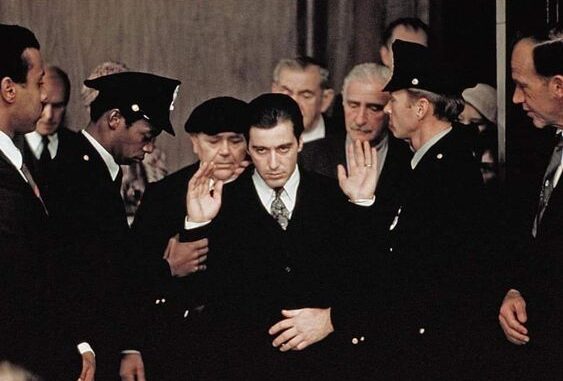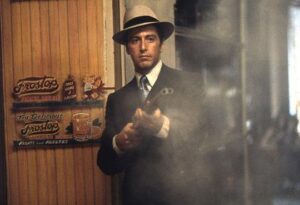
The Godfather’s two endings: Lighting a candle and the wrong side of the door

Now half a century old, Francis Ford Coppola’s revered New Hollywood masterpiece has one of the best-known final shots in film history—but it almost had a much more Catholic ending.
The shattering final shot in Francis Ford Coppola’s The Godfather, while it is among the most celebrated closing shots in cinema history, was not the original ending envisioned by Coppola. Anyone who knows the film well can see the last image in their mind’s eye: a closing door eclipsing the stricken face of Diane Keaton’s Kay, cutting her off from her husband, Al Pacino’s Michael Corleone, whom she now realizes has claimed the mantle of his late father, crime-family patriarch Don Vito Corleone (Marlon Brando).
But Coppola also shot an alternate ending, taken directly from Mario Puzo’s novel and similarly centered on Kay. The unused shot finds Kay in a Catholic church lighting votive candles as she prays for her husband’s soul and for her family. This alternate denouement would have ended the film on an arguably more hopeful note; certainly the effect would have been poignant continuity rather than ruthless rupture.
Puzo envisioned Kay taking her place alongside Michael’s mother, Vito’s widow Carmella (Morgana King), and other mob wives and mothers pleading with heaven on behalf of their corrupt menfolk. This would have been a more Italian and certainly a more Catholic denouement. For Coppola, whose idea of Catholic identity was entangled with hypocrisy and decadence (“to do one thing and think another,” Coppola once told Brian De Palma, “seemed very Catholic to me”), it would have underscored the contradictions at the heart of Sicilian crime-family culture. By implicitly contrasting lived Christian spirituality with mob life, it would also have made a more traditional Hollywood ending.
Jon Lewis, author of Whom God Wishes to Destroy: Francis Coppola and the New Hollywood, considers Coppola’s original ending superior to the ending that wound up in the film, which he says was preferred by Paramount production chief Robert Evans. The original ending, Lewis maintains, “returns us to the film’s thematic conflation of family and religion and Michael’s betrayal of both”; the actual ending “only accounts for Michael’s power and Kay’s growing irrelevance in his life.” (See Lewis’ essay “If History Has Taught Us Anything…” in editor Nick Browne’s Francis Ford Coppola’s The Godfather Trilogy, page 30.)
This is a plausible case for the alternate ending…but it only underscores, for me, the brilliance of the actual ending. The door quietly closing between Kay and Michael—far from representing only an insuperable barrier in their marriage and their once-candid relationship—becomes a potent metaphor resolving multiple themes and ideas established as early as the opening scene and even the opening shot. In the process, the final image offers a damning last word (at least until the sequels) on Michael’s choices and their consequences.
